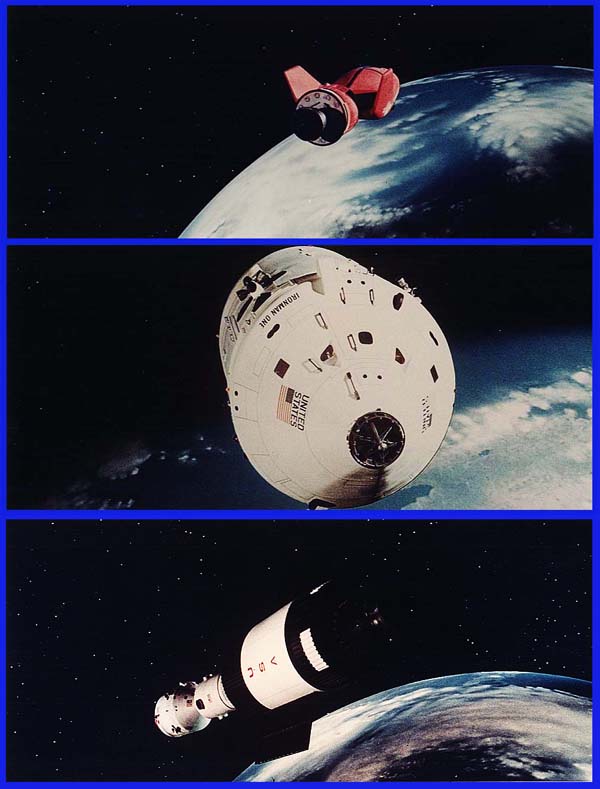
The XRV Lifting-body Rescue Vehicle

The XRV Lifting-body Rescue Vehicle
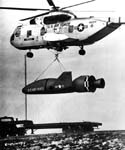 |
 |
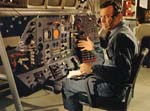 |
Photo provided by Tom Seiler |
 |
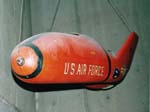 Photo by Mark Gray |
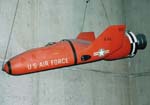 Photo by Mark Gray |
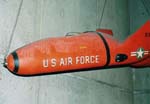 Photo by Mark Gray |
 Photo by Mark Gray |
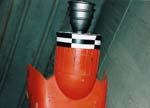 Photo by Mark Gray |
The Apollo Capsule & Service Module
Skylab Orbital Workshop & Crew
 |
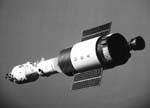 |
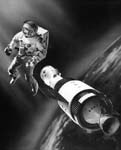 |
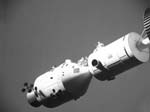 |
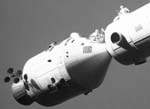 |
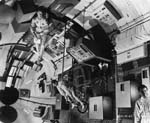 |
 |
 |
|
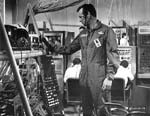 |
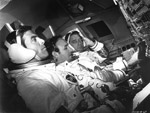 |
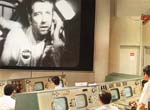 |
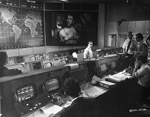 |
Apollo
Program History Links Page
Marooned & Its Spacecraft
Web site by: Phil
Broad
Apollo Capsule
"Marooned" is an often overlooked motion picture because of its poor special effects and non-existent musical sound track. These combine to give it a very dry character yet "Marooned" remains a very credible story with excellent performances and great attention to technical accuracy. Not only does it boast high technical accuracy but it was made at a very interesting point in the history of the U.S. manned space program. This motion picture was made after the Apollo 1 fire at a time when the redesigned Apollo spacecraft had yet to be finalized and because of this we see a Command Module in Marooned which is a curious combination of Block I and Block II design elements. We also see early, less refined, features reflected in the full scale mock-up which was based on then-current data supplied by NASA. Items such as the hatch with square corners, a round view port in the outer hatch panel and various other details. The mock-up featured some actual Apollo hardware too which had been supplied by North American Aviation, builders of the actual Command Module. The hatch, the docking probe & drogue assembly and various interior fittings were supplied on loan by the spacecraft prime contractor. The Apollo was also interesting as a movie set because, like the "Proteus" submarine in "Fantastic Voyage", the interior was actually built inside the exterior as an integral unit. When you look at the photos of the exterior you will note the visible seams where the sections could be removed for filming inside. Also visible is the Service Module which was built "too short" in an effort to save money. Plans would call for it to be shot only looking back from the front or forward from the rear so the actual length would not be visible. Unfortunately the filmmakers did include a side view after all where the foreshortened mock-up is all too apparent. It is possible that the mock-up was built to represent a short-range version of the Apollo, since it was only going into Earth orbit not to the Moon, however the filming miniature displays the standard Service Module dimensions.
Skylab
The version of Skylab seen in the film is interesting as well. It too was still in very early planning stages at the Apollo Applications Office at NASA where they were working to define what the real Orbital Workshop should look like and how it should be built. The interior we see in the film still represents the earliest thinking concerning interior layout where equipment would simply be bolted to the outer perimeter of the SIVB liquid hydrogen tank while in orbit. Initially it was planned to convert a "spent" SIVB which had been left in orbit by a previous Apollo mission. At the time there was no budget for building an SIVB specifically for the Orbital Workshop project, it was only after the cancellation of the last two Apollo moon landing missions that an unflown SIVB became available. Later it would be decided to incorporate decks inside and give the interior a definite "up & down" orientation (see the section here on Skylab). It was felt that it would be a more comfortable environment for crews which had been raised in a gravity well, even though there could actually be no "up" or "down" in zero gravity. The exterior too reflects the earliest design for Skylab. Gone is the entire telescope mount with its four solar cell arrays in their distinctive "X" pattern, the Orbital Workshop is also shown as having its J2 engine still mounted to the aft thrust structure and the main solar cell arrays are substantially smaller. The telescope mount would be added to the project at a later date when increasing pressure was brought to bare for NASA to demonstrate that the program was providing data useful to people "on Earth". It would be used for imaging of Earth natural resources and to record the extent of pollutants pouring into the environment.
The XRV Lifting-body
Of all the vehicles shown, my
favorite is the XRV lifting body. This is actually a very accurate
representation of various Air Force studies being conducted at the time
concerning the transport of crews to and from orbiting platforms.
It basically looks like a NASA X-24A "flying potato" (Martin-Marietta)
but it incorporates other features which are reminiscent of studies conducted
by Lockheed. Another candidate is the Air Force project known as
PRIME
which uses a miniature lifting body based on the X-24A. Unfortunately
I don't know its actual pedigree but suffice to say that it is one of the
most realistic spacecraft designs to be portrayed in any film. In
actual operation the main engine assembly at the rear would only be used
for on-orbit maneuvering then it would be jettisoned before re-entry, leaving
the fully aerodynamic lifting body to make the final landing. Although
not seen in the film, the XRV would also be equipped with retractable landing
gear featuring wheels or skids and it would likely have a small engine
buried in the tail such as the XLR-11 (the same type used in the X-1 rocket
plane).
Please contact me if you have comments about these images or corrections to the information presented here via E-Mail.